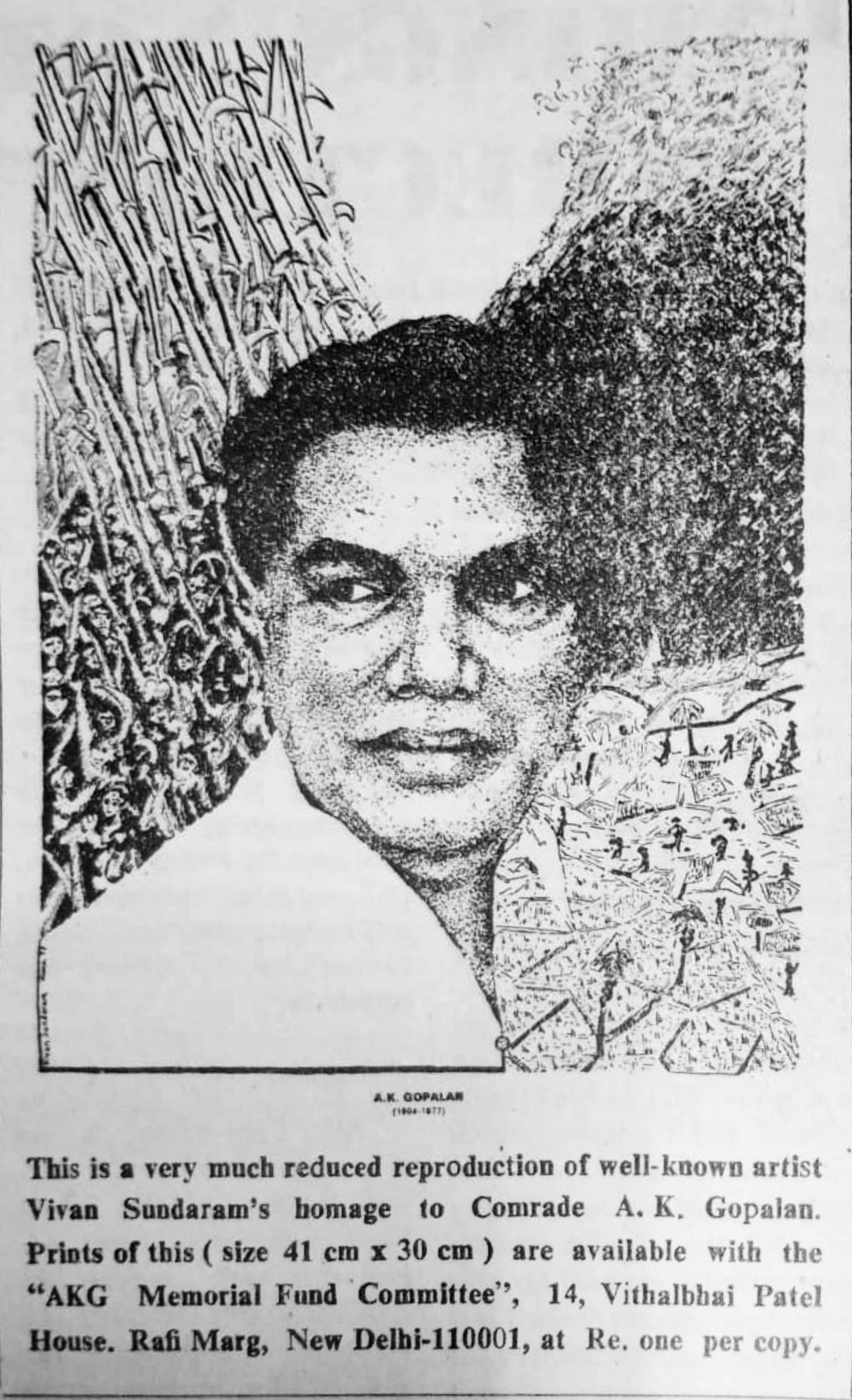
VIVAN Sundaram, one of the most influential and radically creative artists of the post 1960s generation passed away on March 29 after a brief illness.
Vivan actively aligned himself with the Left and progressive movement in general and with the CPI(M) in particular.
His contribution to the anti-communal and pro-people movements and the formation and functioning of the Safdar Hashmi Memorial Trust are a legacy to cherish.
The Shergil Sundaram Art Foundation and the Safdar Hashmi Memorial Trust organised a memorial meeting attended by artists, writers, poets, activists and friends of Vivan.
Sohail Hashmi read out a statementat the memorial meeting remembering Vivan Sundaram’s life and his contributions. He recalled one of the most touching responses that he received, when he posted the news of Vivan’s passing, which was from Pushpesh Pant who wrote “remember him from his days of ‘Heights of Machu Pichu’ poster like paintings, when he frequented JNU. It was sheer bliss to be young in that dawn. The emergency descended like a dark night, but Vivan persisted in piercing it with light.”
Sohail Hashmi said there were some things in Vivan that did not change in the 50 odd years that he knew him and these included his uncompromising stand against imperialism, authoritarianism and communalism, his consistent support to the cause of socialism, his resistance to commodification of art and his persistent efforts to make art accessible to the people. And then there was his capacity to visualise and to scale up the kernel of an idea into something that left you amazed.
Two examples of this kind of scaling up are, one the Mangolpuri Janotsav that was developed from Safdar’s idea of countering Apna Utsav and the second was the exhibition based on Vivan’s drawings based on Pablo Neruda’s poem ‘Heights of Machu Picchu’ that travelled to DU and JNU. Hundreds of prints of portraits of Neruda and Karl Marx from this exhibition were each signed by Vivan and sold for Rs 10. Almost all continue to be treasured by those who bought them in the days when resistance defined democracy.
“The SFI had planned to screen at DU, October and Battleship Potempkin by Eisenstein, Vivan got a silk screen frame made and taught us how to design and print our own posters. Several other posters were also designed and printed by Vivan on that silk screen frame including posters for a festival of Cuban Cinema and the poster announcing the first conference of the Delhi University Unit of the SFI. When the SFI at JNU started a weekly bulletin, it was Vivan who designed the mast-head of the JNU SFI Bulletin”, Sohail Hashmi said.
“One of my first experience of art being used for a political campaign was again conceived designed and mounted on a Van by Vivan, when we went around markets collecting funds, medicines and clothes in support of the people of Bangladesh.
“Vivan constantly commented on the larger questions of politics through his works like the famous ‘The discreet charm of the bourgeoise’; two paintings from this exhibition were bought by JNU, the Golf Course for the VC G Parathasarthy’s office and the tablecloth for the office of the registrar NVK Murthy” Sohail said.
After the lifting of the emergency posters were painted calling for defeating the perpetrators of the emergency and Vivan was an enthusiastic participant, it is this consistent involvement with the goings on all around that made him join and actively work in the Committee for Communal Harmony, to mobilise art works for an auction to raise funds for the campaign for communal harmony. Sohail Hashmi recalled that it is during this campaign that both Safdar and he got to work with and know Vivan better and that is how a little later Vivan was to take the lead in mobilising artists in support of workers agitating for minimum wages.
“Though Vivan had first seen Safdar when the poster making workshop happened at our house, he now came to know him and so when Safdar was killed in the attack on Janam in Sahibabad, Vivan was one of those who took the lead in the formation of Sahmat. Vivan continued to be deeply and actively involved in ideating, conceptualising and executing a large number of projects that have contributed immensely into making Sahmat into what it has become.
“The Artists’ Alert Exhibition and the art auction that got us the corpus to run Sahmat were Vivan’s ideas as was the idea of asking prominent artists to illustrate Safdar’s poems for children,” Sohail said.
Post Cards for Gandhi 1994, Gift for India 1997, Art on the move 2001, Ways of Resisting 2002-2003, Images and Words 1991-1992, Forms of Activism 2014 and many others were all thought of, developed with Vivan playing a leading role in conceiving and executing them with untiring efforts. Vivan continued to contribute despite constantly aggravating arthiritis. Vivan carried on, attending Sahmat meetings, without fail attending the January 1 Safdar Memorials across three decades and more.
Sohail Hashmi concluded saying, “Vivan we will miss you, we will miss your gentle presence, your determination, your dogged persistence and your commitment to take art to the people and above all we will miss your smile. Farewell Vivan, there will not be another like you.”


